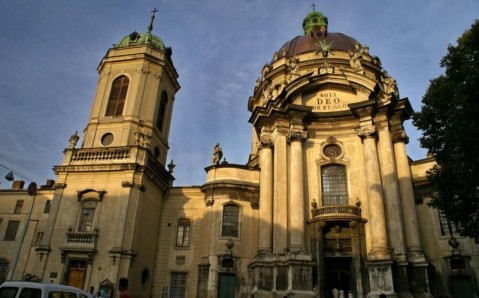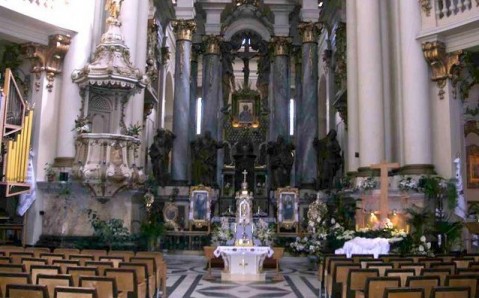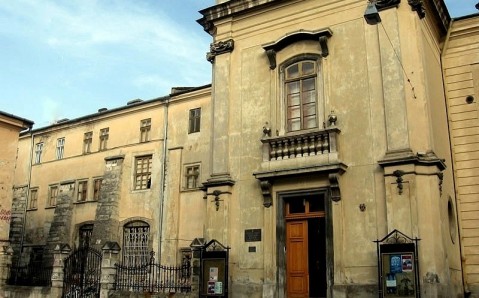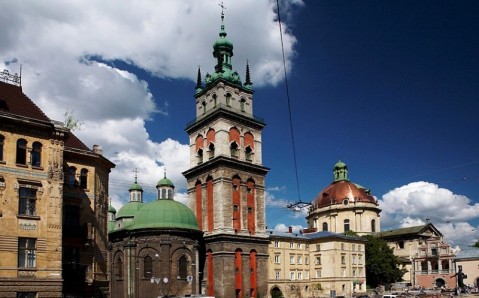The Dominican Church
Muzeinaya St. 1
The Dominican Church is rightfully considered to be one of the best monuments to late baroque architecture not only in Lviv, but all of Europe. The building harmoniously rounds out the historical center’s ensemble. Along with other temples in Lviv, it is included on UNESCO’s list of World Heritage Sites.
The construction of the Roman Catholic Dominican Church began in the middle of the 18th century. It was a project of the famous architect Jan de Witte – the commander of the Polish fortress in Kamianets-Podilskyi. The construction was possible thanks to the financial contributions of Polish hetman Joseph Potockiy, who laid the first stone in the temple’s foundation. The new church was built in place of a Gothic cathedral, which was founded by Dominican monks that came to Lviv in the 14th century. On the building’s facade are the Dominican coat of arms and the symbol of Dominican order – a dog with a burning torch clenched in its teeth. The building is also decorated with monumental figures of saints.
At the end of the 20th century, the Dominican Church passed into the possession of the Ukrainian Greek Catholic Church and was renamed the Church of the Holiest Eucharist. Today, the Museum of Religion occupies the monastery buildings; in Soviet times, it was called ‘the Museum of Religion and Atheism.’ Besides the cathedral and the monastery buildings, a four-story, neo-baroque bell tower built in the 19th century is also a part of the architectural complex.
The Dominican Church’s interior strikes with its splendor and elegance. Its centerpiece is the baroque altar with four apostle figures. The cathedral keeps some remarkable pieces of art, among which are stone and alabaster gravestones from the 16th - 17th centuries, brought here from the former Gothic church.
There are several stories and legends connected to the Dominican Church. One of them claims that in 1559, Galshka, the heiress to the fortune of Princes Otrozhsky, hid in the temple building from her loveless husband. Having deceived her into marrying him, her husband, who was the governor of the province, besieged the monastery, forcing the Dominicans to give up the princess. In 1707, the Dominican Church went down in history after Russia and the Polish Lithuanian Commonwealth signed a treaty in the war against Sweden.
Lit up with bright colors, the church looks the most majestic and mysterious in the evening.

 Western
Western








